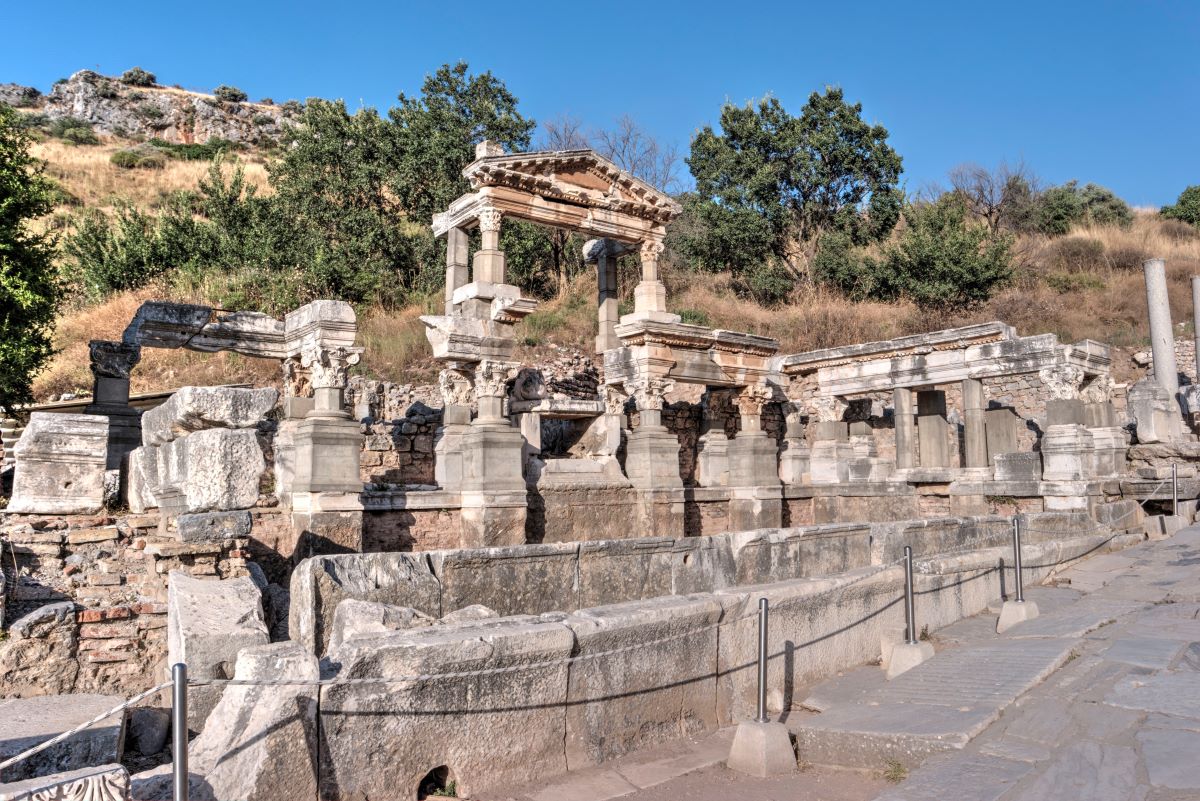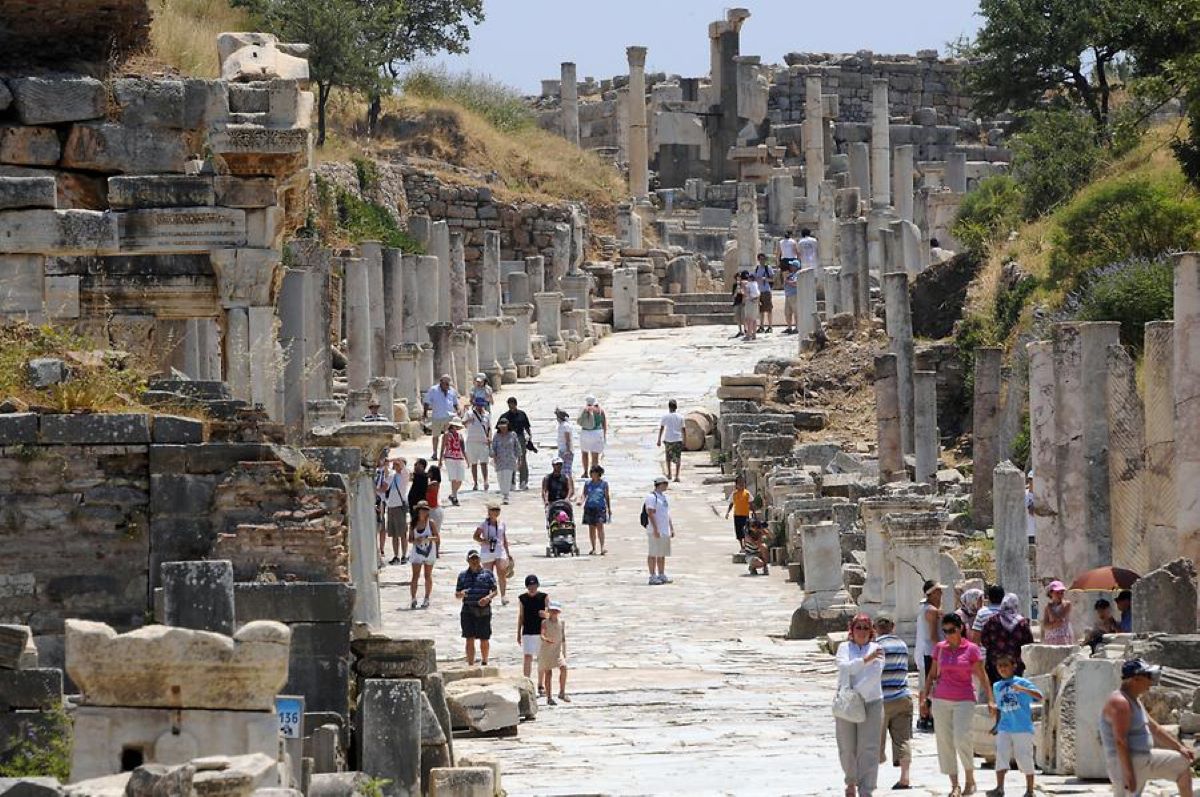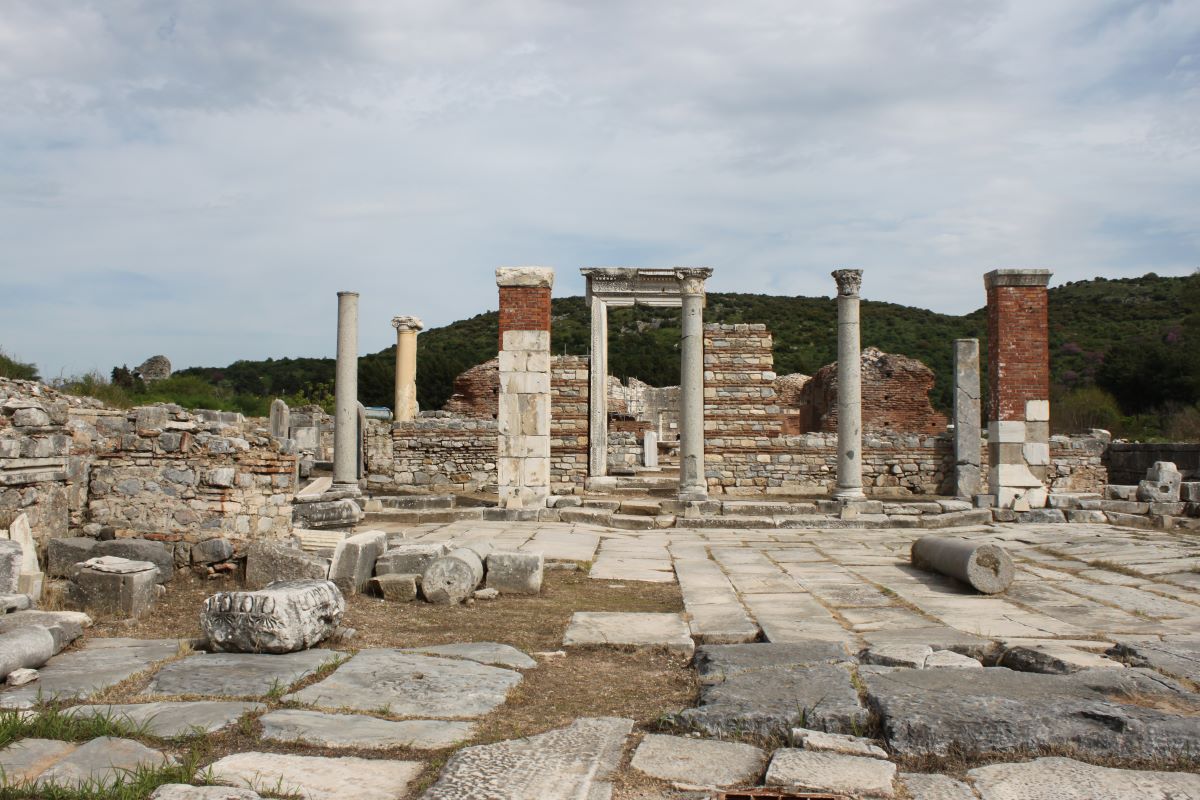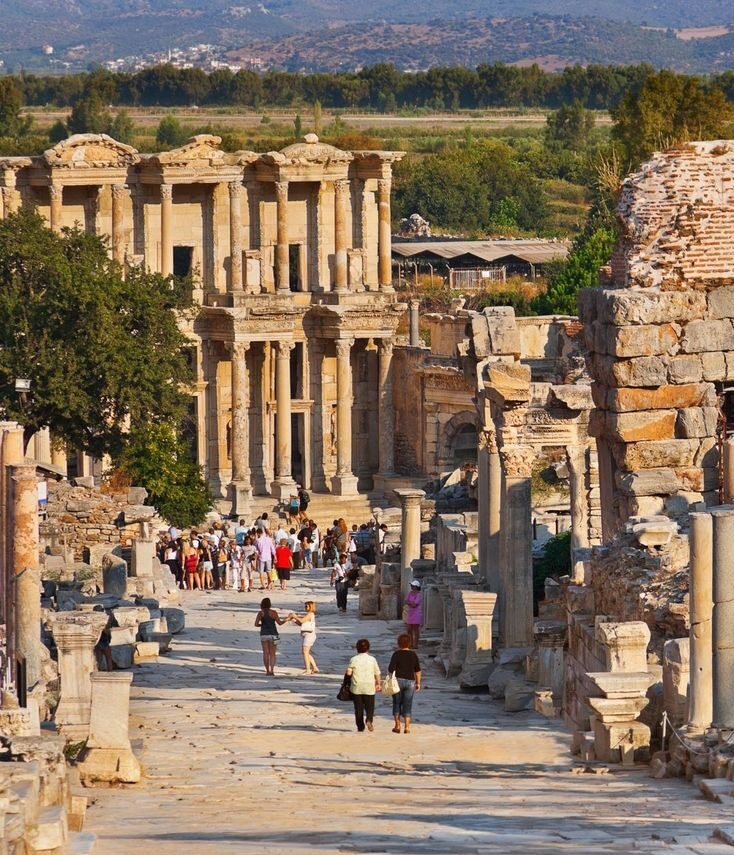The ancient city of Ephesus is a site of remarkable historical significance, with a…

Exploring the Trajan Fountain: A Roman Engineering Marvel in Ephesus
The Trajan Fountain, located in the ancient city of Ephesus , is a remarkable feat of Roman engineering and design that has captured the imagination of visitors for centuries. Built in the early 2nd century AD, the fountain was constructed during the reign of Emperor Trajan and was dedicated to him in honor of his visit to the city.
The fountain played a crucial role in the city’s infrastructure, providing a reliable water source to its residents and visitors. Its historical significance is not only due to its practical function, but also its intricate and beautiful design. The fountain boasts stunning architectural features such as columns, friezes, and ornate carvings that depict various mythological scenes.
Today, the Trajan Fountain remains a popular tourist attraction for those visiting Ephesus. Visitors from all over the world come to marvel at the intricate design and to gain a deeper appreciation for the engineering achievements of the Roman Empire. The fountain’s historical significance and breathtaking beauty have made it a must-see destination for anyone interested in history, architecture, or art.
Ephesus was an important city in the ancient world and was a significant center of trade and commerce. It was also a vital cultural and religious hub, with numerous temples, theaters, and other public buildings. The city was ruled by the Roman Empire from 133 BC until the 4th century AD, and during this time, it experienced significant growth and development. The Trajan Fountain was built during the reign of Emperor Trajan, who ruled the Roman Empire from 98 to 117 AD. The fountain was constructed in Ephesus around 104 AD to provide clean drinking water for the city’s inhabitants. At the time of its construction, the fountain was one of the largest and most impressive structures in the city.
The Trajan Fountain was designed to provide clean water to the city’s residents. It was located near the intersection of two major roads in the city, making it easily accessible to the public. The fountain’s design was intended to be both practical and aesthetically pleasing, with ornate decorations and sculptures depicting scenes from Greek mythology.
In addition to its practical function, the Trajan Fountain was also a symbol of Roman power and influence in Ephesus. It was a testament to the wealth and sophistication of the Roman Empire, and it served as a reminder to the people of Ephesus of their subjugation to Roman rule.
The Trajan Fountain is a magnificent structure that impresses visitors with its intricate architecture and beautiful decorations. Here are some of the most noteworthy features of the fountain:
Architecture: The Trajan Fountain is a monumental, multi-level structure that measures 20 meters in length and 10 meters in width. It is made of marble and features a rectangular basin with a series of steps leading up to a raised central platform. The basin was used to collect and distribute water throughout the city, while the platform was used for public ceremonies and announcements.
Decorative elements: The Trajan Fountain is adorned with an impressive array of decorative elements that showcase the skills of the ancient craftsmen who created them. The fountain features several statues, including one of Emperor Trajan, who the fountain is named after. Other statues depict figures from Greek mythology, such as the sea god Poseidon and the goddess Artemis. Additionally, the fountain’s walls are covered with intricate reliefs that depict scenes from everyday life, such as women drawing water from the fountain and men loading goods onto ships.
Inscriptions: The Trajan Fountain also features several inscriptions in both Greek and Latin that provide valuable historical information about the fountain and the city of Ephesus. Some of these inscriptions describe the construction of the fountain and the contributions of various individuals who helped to fund it, while others offer insights into the daily life of the city’s inhabitants.
The Trajan Fountain is not only a stunning architectural masterpiece, but it also played an important role in Roman society and had a significant impact on the city of Ephesus and its inhabitants.
One of the reasons why the fountain is historically significant is due to its impressive architecture. The fountain’s intricate design, including its imposing façade and numerous decorative elements, showcases the advanced engineering and artistic abilities of the Roman Empire. It is a testament to the grandeur and opulence of the era, and serves as a reminder of the impressive feats that could be accomplished through the empire’s immense resources and manpower.
In addition to its architectural significance, the Trajan Fountain was also a vital component of daily life in Ephesus. The fountain was located at the intersection of two major roads in the city, and served as a source of clean water for residents and travelers alike. At a time when access to clean water was limited, the fountain provided a much-needed resource for those passing through the city, as well as for local residents.
The fountain also had a social function in Roman society, serving as a meeting point and gathering place for residents of Ephesus. It was a place where people could come together to chat, socialize, and exchange news and information. In this way, the Trajan Fountain helped to foster a sense of community among the people of Ephesus.
Overall, the Trajan Fountain is an important historical site that provides insight into the grandeur and complexity of the Roman Empire, as well as its impact on the daily lives of those who lived within its borders. Its impressive architecture and social significance make it a must-see attraction for anyone interested in history or architecture, and a testament to the enduring legacy of the Roman Empire.




This Post Has 0 Comments